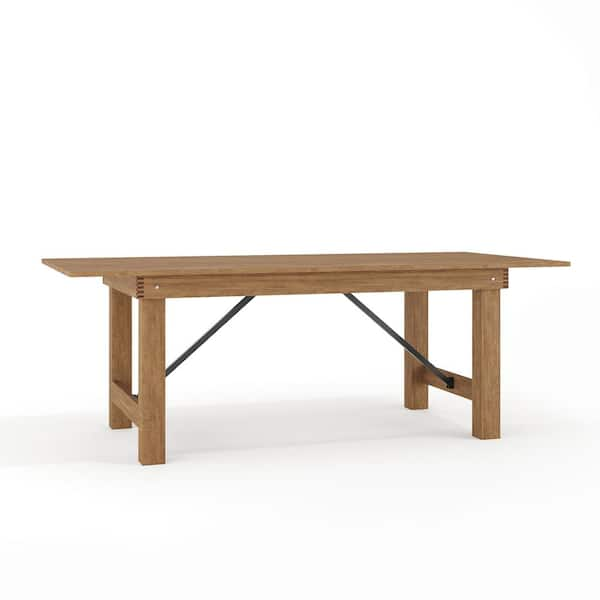Secret Elements to Bear In Mind for Dining Table Legs Timber Choices
When choosing timber for eating table legs, numerous crucial variables warrant careful consideration to make sure both capability and aesthetic appeal. The option of timber kind, identified by its durability and special grain patterns, plays a crucial role in the overall design and durability of the piece.
Wood Types and Attributes
When picking timber for eating table legs, it is important to understand the distinct qualities of different wood types. Different woods offer distinctive advantages and drawbacks, affecting both the durability and aesthetic appeal of the completed product.
Oak, understood for its outstanding sturdiness, additionally includes a popular grain that can include character to the table. Cherry wood, with its rich color that deepens over time, gives an extravagant look yet may call for even more upkeep to stop scratches.
On the various other hand, softwoods like ache and fir are a lot more budget-friendly and simpler to deal with, yet they are less sturdy than hardwoods. Pine is light-weight and includes a cozy, rustic appearance, making it a favored choice for laid-back eating setups. Nevertheless, it is extra vulnerable to damages and scratches.
Comprehending these characteristics will certainly aid in making an informed choice to ensure the legs of the dining table fulfill both aesthetic and practical demands.
Grain Patterns and Aesthetic Appeal
The wood's grain is not simply a visual quality; it imparts a distinct personality and charm to each piece. Different wood species exhibit distinct grain patterns, ranging from the straight lines of maple to the intricate swirls of oak and the striking figure of walnut.
Furthermore, the positioning and range of the grain can affect the viewed dimension and style of the table. For example, bigger, a lot more obvious grains might provide a strong, remarkable impact, while finer, subtler grains can produce a refined, underrated appearance. In addition, the completing process can better boost these patterns, stressing the natural charm of the timber and highlighting abundant hues.
Inevitably, the selection of grain pattern need to balance with other layout aspects, such as the tabletop and bordering furnishings, guaranteeing a cohesive visual that elevates the eating experience. Thoughtful option of wood grain not just contributes to the table's appeal however also mirrors the owner's taste and design.
Longevity and Stamina
The sturdiness and toughness of dining table legs are vital considerations for making certain longevity and stability in any eating room. Choosing the appropriate timber is crucial, as various species display differing levels of durability.

Eventually, investing in top quality wood and durable building and construction methods will certainly yield a table that stands the examination of time, while offering a reliable structure for plenty of meals shared amongst friends and family. Focusing on resilience and stamina makes sure that your eating table continues to be useful and visually pleasing for several years ahead.
Maintenance and Treatment
Appropriate maintenance and treatment are vital for maintaining the toughness and toughness of table legs made from wood. Routine cleaning is essential; utilizing a soft, moist towel guarantees that dirt and debris do not gather, which can bring about scratches and monotony. It is recommended to prevent severe chemicals or abrasive materials that could harm the coating.
In addition, applying an appropriate timber polish or wax periodically can assist keep the site web sheen and safeguard the wood from moisture and spills. Nonetheless, it is important to follow the maker's suggestions regarding the kind of product to make use of, as specific finishes might respond adversely to certain chemicals.
Humidity and temperature changes can additionally affect wood table legs, causing them to warp or fracture. It's ideal to position the table far from direct sunlight and warm sources. Addressing these promptly can prevent more damage. if the table legs have any kind of damages or scratches.
Last but not least, regularly evaluating the joints and screws for rigidity is crucial to preserve architectural stability (Dining Table Legs Wood). By adhering to these maintenance techniques, house owners can ensure their wood eating table legs continue to be attractive and functional for several years to come
Environmental Factors To Consider
When picking timber for eating table legs, hop over to here it's vital to take environmental factors to consider into account. The sourcing and sustainability of wood are paramount in minimizing environmental impact. Opting for wood from certified resources, such as those supported by the Woodland Stewardship Council (FSC), makes sure that the wood is harvested sensibly, advertising forest preservation and biodiversity.

Additionally, local sourcing of wood reduces transportation emissions, sustaining regional economies while lessening environmental influence. It is likewise suggested to be knowledgeable about the timber's therapy and finishing procedures, as certain chemicals can be dangerous to both human health and wellness and the setting. By focusing on lasting timber options, consumers can add to environmental preservation while appreciating the toughness and charm of their table legs.
Verdict
In conclusion, choosing wood for dining table legs demands mindful factor to consider of various aspects, including wood kinds, grain patterns, and resilience. Upkeep requirements and ecological sustainability further influence wood choices, highlighting the importance of sourcing from certified or recovered materials.
When choosing wood for eating table legs, numerous essential variables call for cautious consideration to ensure both capability and aesthetic charm.Appropriate maintenance and treatment are essential for maintaining the durability and stamina of dining table legs made from wood.When choosing wood for dining table legs, it's necessary to take ecological considerations right into account. By focusing on lasting wood choices, customers can add to environmental conservation while appreciating the resilience and appeal of their eating table legs.
In final right here thought, choosing timber for dining table legs requires careful factor to consider of different variables, consisting of wood types, grain patterns, and toughness. Dining Table Legs Wood.